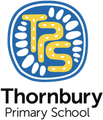Language and Culture

Kii, Deadly TPS community, biladu-njan wat/how are you all? And in the words of my Yawuru language...Ngaji gurrjin/Hello everyone!
We started this term, continuing our learning about the Wurundjeri Seasons (as outlined in The Eight Wurundjeri Seasons in Melbourne, Jim Poulter, 2015.) and in particular:
Wintoonth Wutanbaj-Djumbuna - Regeneration and Women’s Business:
When: September to late October
Weather conditions:
• Rising temperatures
• Rain continues
• Days and nights are of equal length
• Melting snow fills the billabongs
Wurundjeri seasonal activities:
• In preparation for the October flooding of the river flats, freshwater mussels were harvested in their hundreds and taken in carry bags from the rivers to creek locations above the flood-line. A deep hole was then dug in the damp earth and the mussels lined up row upon row, and then buried. When mussels were buried in this way, they were able to stay fresh for up to two years, through suspended animation, in these damp earth ‘refrigerators’ and remained available for eating in this period.
• These stored supplies of mussels were also available for guests from neighbouring areas to share in the inter-clan business season (late February to early March).
• This was also a time in which many women gave birth. These births were planned and timed to enable the babies to gain strength in the cooler months prior to the start of the hot, dry north wind season.
• This period, therefore, was the time of women’s business. Births of the new-born babies were attended by the women at special places near the camp. Special ceremonies and rituals for women were held and celebrated during this time.
• While the women were involved in their business, the men took over the food-gathering tasks in their stead.
• This was also a time when older girls were initiated into womanhood. Young Wurundjeri men would be invited to join in this ceremony at a later stage, where they would promise to protect each girl like they would their sister.
Plant life during this season:
• This is a time when plants grow vigorously and regenerate.
• Burgan, Goodenia, Kangaroo Apple, orchids, lilies are in flower.
• Mrynong or Yam Daisies are also flowering.
Animal life in this season:
• Migratory birds like the Sacred Kingfisher and the Darebin, also known as the Welcome Swallow, return from wintering in Northern Australia.
• Young kangaroos are out of their mother’s pouches.
Woiwurrung Language Learning
Foundation students are continuing to learn and practise basic greetings and introductions, simple classroom commands and requests. Students can now confidently sing the song: ‘If You’re Happy and You Know It’. Use the attached audio and lyrics to learn and practise at home with your children:
Barrbunin-warr ngarr-gi-warr djilba marnang-in / happy-you know-you hit(clap) hand-your
Barrbunin-warr ngarr-gi-warr djilba marnang-in / happy-you know-you hit(clap) hand-your
Barrbunin-warr ngarr-gi-warr yumarrala-warr / happy-you know-you give-you
Barrbunin-warr ngarr-gi-warr djilba marnang-in/happy-you know-you hit(clap) hand-your
Students are also quite confident in singing the Body Parts Song on their own.
Foundation students are also learning how to sing the Numbers 1-10 Song. Use the attached audios and lyrics to learn and practise at home with your children:
Ganbu 1
Bindjirru 2
Bindjirru ganbu 3
Bindjirru ba bindjirru 4
Marnang 5
Marnang ganbu 6
Marnarng bindjirru 7
Marnang bindjirru ganbu 8
Marnang bindjirru ba bindjirru 9
Marnang marnang 10
Students in 1-6 have been learning topic and year level specific Woiwurrung vocabulary with a focus on local Woiwurrung animal names. Students in Grades 5-6 have been researching animal facts for the creation of ‘Winha Manji/What is This Australian Animal? Riddles which have then been used with all classes to enjoy and learn from. The Woiwurrung language focus has been on asking and answering simple questions and making simple statements using the Woiwurrung animal nouns e.g.
Winha manji? / What is this?
Manji gurrborra! / That is a koala!
Students in Years 1-6 have continued to learn about the different sounds in the Woiwurrung language, and depending on students’ year level, the associated letter patterns used to record these sounds, regularly practising through fun activities, with many students showing their knowledge and skills in this area.
I have also been teaching students in the upper year levels a bit of my own language, Yawuru, as a comparison to Woiwurrung, particularly the sounds and spelling systems used by both languages.
Stay tuned in to our Dhumbadjirri newsletters for more information about what students are learning in our Language and Culture classes.
Twaganin (Woiwurrung) Galia (Yawuru) / See you later!
